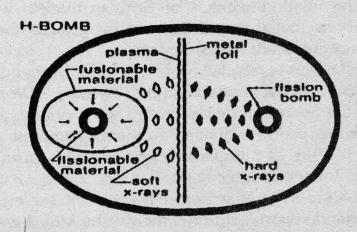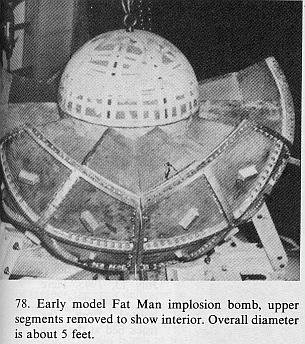
Hydrogen (or thermonuclear) bombs which are much more powerful however produce a smaller amount of ionizing radiation and hence sometimes they are referred to as "clean" bombs. In the contest of radioactive fallout it is important, also from a strategic viewpoint, the physical structure of the bomb as referred to the tamper (or reflector) encasing the fissionable/fusionable materials which may be of uranium, plutonium, beryllium, cobalt or some other material which therefore will produce selected types of radioisotopes which will disperse in the atmosphere and subsequently fall to the ground as fallout. This means that the radioactive fallout will be more or less enhanced in proportion to the bomb's yield and the isotopes emitted will have an half-life and concentration strategically chosen .
A nuclear weapon may be detonated underground, underwater, on the ground or at high altitudes. Since the immediate effect of the explosion is the creation of the fireball and the subsequent release of extremely high temperatures in the geomorphology of the hit zone, this is of great importance for all the forms of life within the radius of the explosion's effects. While the fireball may cause more or less permanent visual damages to both man and animals, the intense thermal radiation, besides its lethality may cause firestorms, conflagrations, and serious burns to all forms of life at great distances from ground zero, depending also on the meteorological conditions at the moment of the explosion, i.e., a dry and hot day will greatly favor the spreading of the thermal energy while the presence of rain, haze or smog will act as a natural screening source and dampen the thermal radiation thus limiting to a certain extent the resulting damages. At Nagasaki, where the more powerful plutonium bomb was detonated ("Fat Man" - image at right) the number of victims and damages were less than at Hiroshima where the less powerful uranium bomb was detonated. This was mainly due to the irregular morphology of the zone targeted. |
 |